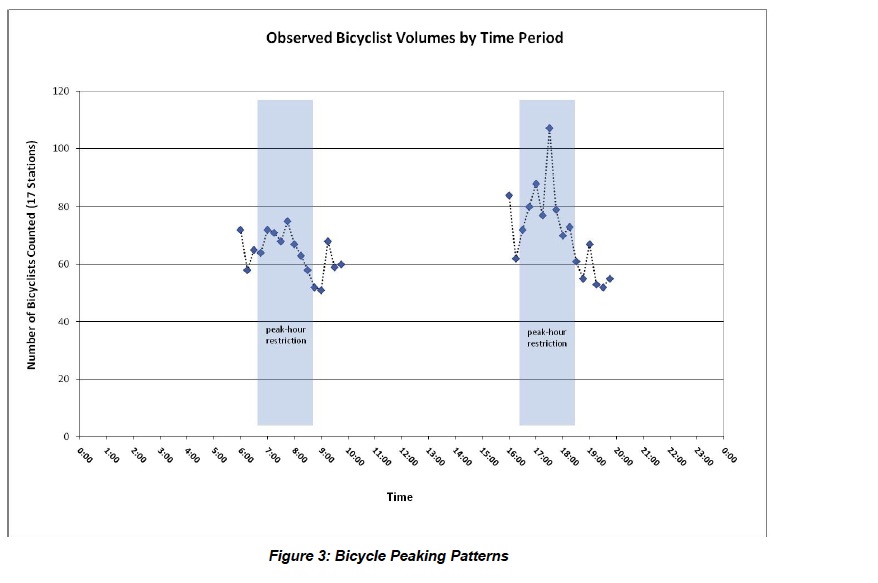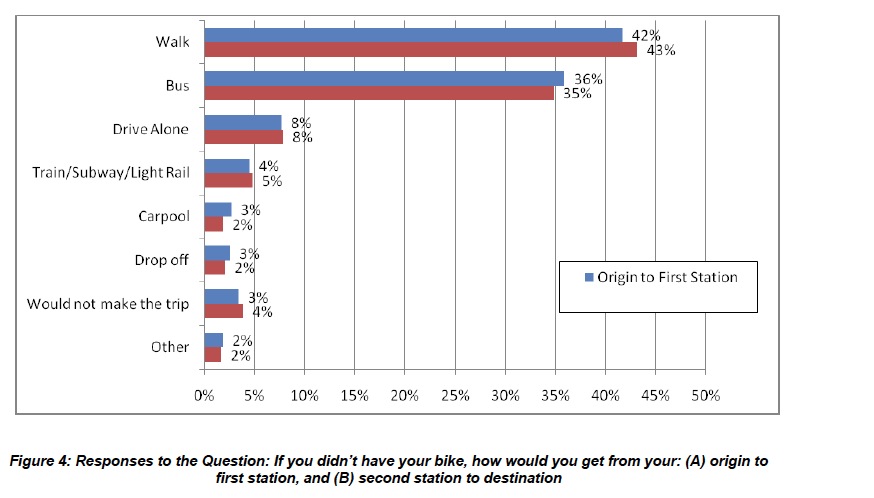LOS ANGELES COUNTY METROPOLITAN TRANSPORTATION AUTHORITY
Executive Summary
Purpose
The Los Angeles County Metropolitan Transportation Authority (Metro) recently began studying the ways in which bicycling, for transportation and in combination with transit, can reduce automobile use and lower greenhouse gas (GHG) emissions. The first of these focused studies concentrated on the Metro Orange Line and parallel bicycle path. This Bicycle Rail Trip Analysis and Greenhouse Gas Emissions Study looks more broadly at bicycle trips to and from Metro Rail. The purpose of this study is to establish the benefits of providing an integrated transportation system where bicyclists are accommodated at train stations and on trains.
Methodology
This focused study relies on bicycle trip data gathered by conducting intercept surveys of bicyclists at a subset of nineteen (19) Metro Rail stations. Counts and surveys were conducted during the weekday morning commute period (6 a.m. to 10 a.m.), the weekday evening commute period (4 p.m. to 8 p.m.) and the weekend midday period (10 a.m. to noon). Bicyclists were asked to report about the journey they were taking at that moment, from the origin to the final destination. Concurrently with the intercept surveys, volunteers recorded the total number of bicyclists entering and exiting each sampled station. Volunteers collected 605 usable surveys and counted 2,305 bicyclists at the 19 sampled stations.
This study uses survey data to calculate bicycle-rail trip distances and associated reductions in vehicle miles traveled (VMT) and GHG emissions. Bicycle count data collected at the sample stations was extrapolated to daily and annual bicycle trips at all stations using Metro Rail ridership data from fiscal year (FY) 2009, and commonly accepted traffic analysis methodology. For those bicycle trips that replaced auto-based trips, trip distances were calculated and used to calculate annual VMT reductions, which were then applied in the Caltrans Emissions Factors model to calculate estimate GHG, criteria pollutant, and mobile-source air toxics (MSAT) emissions reductions.
Findings
- This study indicates that bicyclists are a small but important subset of riders on the Metro Rail system, and bicycle-rail trips offset vehicle miles traveled resulting in quantifiable greenhouse gas emissions. The counts and extrapolated methodology mirrors commonly accepted practices in traffic analysis. Some relevant extrapolated results, based on the data, are as follows: Approximately 1,195,000 bicyclists would use the Metro Rail system annually. (Which represents 1.3 percent of all annual trips.)
- Bicycle-rail trips would replace approximately 322,000 motor vehicle trips and reduce 3.96 million vehicle miles traveled each year, offsetting approximately 2,152 metric tons of carbon dioxide equivalents (CO2e) annually. This would be equivalent to taking 422 motor vehicles off the road.
- Bicyclists are universally using the Metro Rail system, with bicyclists reporting starting or ending their rail trip at 71 out of 73 Metro Rail stations surveyed.
- Over a quarter (27 percent) of bicycle-rail trips replace a motor vehicle trip.
- In terms of getting to or from the station, twelve percent of bicycle trips replaced motor vehicle trips.
- On average, 13 bicyclists per hour—one bicyclist every five minutes—enters or exits a Metro train during the weekday morning or weekday evening peak periods. An average of 10 bicyclists per hour – one every six minutes – enters or exits a Metro train during the weekend midday period.
This study provides data on the “bikeshed” of Metro Rail stations, and underscores the importance of increasing a bicyclists’ reach by providing for bicycles on transit. On average, bicyclists traveled 2.2 miles to access train travel (these distance are within the typical bicycling catchment area of a train station). Bicyclists taking the bus travel an average of 4.9 miles to access a station.
About the Los Angeles Metropolitan Transportation Authority
www.metro.net
“Metro is responsible for the continuous improvement of an efficient and effective transportation system for Los Angeles County.”
Tags: bicycle, CA, California, Cycling, GHG, LA MTA, Los Angeles, Los Angeles Metropolitan Transportation Authority, Metro








 RSS Feed
RSS Feed